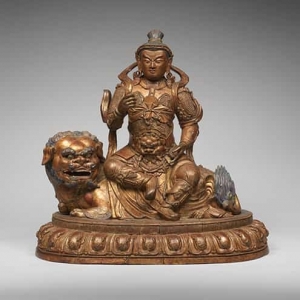
Masterworks: A Journey through Himalayan Art explores major strands in the development of art from the Himalayan region covering a period of more than one thousand years, with objects drawn primarily from the Rubin Museum’s collection.
Masterworks is organized geographically and chronologically, showcasing the diverse regional traditions of Tibet in relation to the neighboring areas of Eastern India, Kashmir, Nepal, Bhutan, China, and Mongolia. Juxtaposing the art of Himalayan regions over time sheds light on the geographic, historical, religious, and artistic interrelationships among these cultures.
This ongoing exhibition reflects our evolving understanding of the relatively young field of Himalayan art. Masterworks is regularly updated as new art objects and texts come to light, reflecting the latest developments in the field. The current iteration features several loans from the Zhiguan Museum of Fine Art, which brings further depth to the themes and extraordinary craftsmanship demonstrated throughout the exhibition.
Preview highlights from the exhibition below and discover more in our online collection search.
Curated by Karl Debreczeny.
Thank you to our members for making this rotation of Masterworks possible. Please support the Rubin or become a member today.
Image Credits
Vaishravana, Guardian King of the North; China; 16th century; wood with lacquer and gold pigment; Rubin Museum of Art; gift from a trustee in honor of Shelley and Donald Rubin, founders of the Rubin Museum of Art; C2010.17 (HAR 69916)
Wangguli, Akheradza, and four other Newar artists (active mid-15th century); Four Mandalas of the Vajravali Cycle; Ngor Ewam Choden Monastery, Tsang Province, Central Tibet; ca. 1429–1456; pigments on cloth; Rubin Museum of Art; C2007.6.1 (HAR 81826); photograph by Bruce M. White
Black Cloak Mahakala; Tibet; 18th century; pigments on cloth; Rubin Museum of Art; gift of the Shelley & Donald Rubin Foundation; F1996.32.7 (HAR 544)
Pages from a Mongolian Liberation through Hearing in the Intermediate State (Bardo Thodrol) Manuscript; Mongolia; 19th century; textile over wood; pigments and ink on paper; Rubin Museum of Art; C2004.37.3 (HAR 65385)
Plan your visit
Send Your Comments
Comments are moderated, and will not appear on this site until the Rubin has approved them.

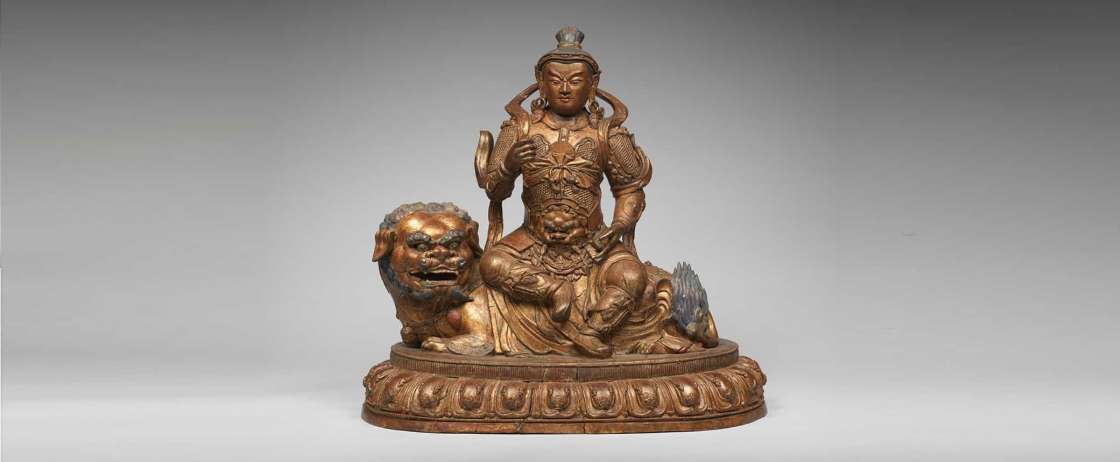
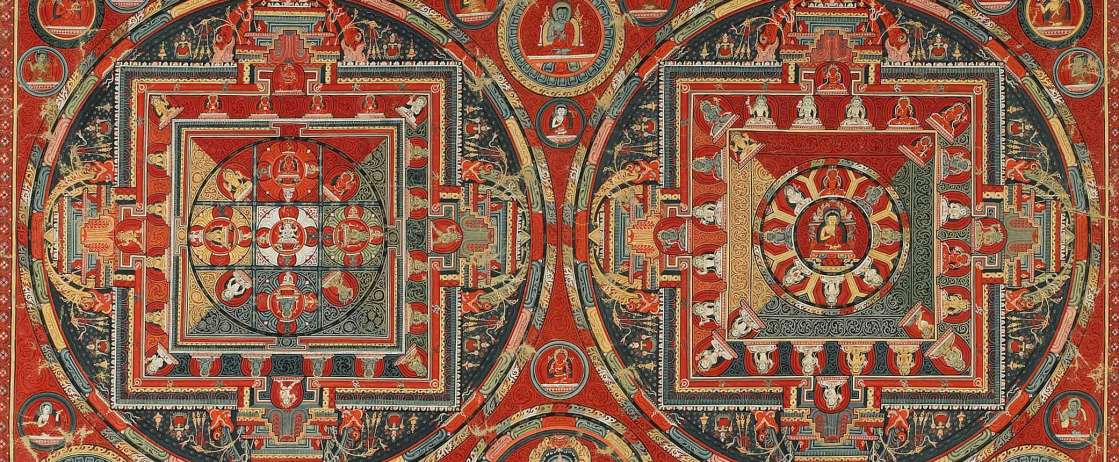
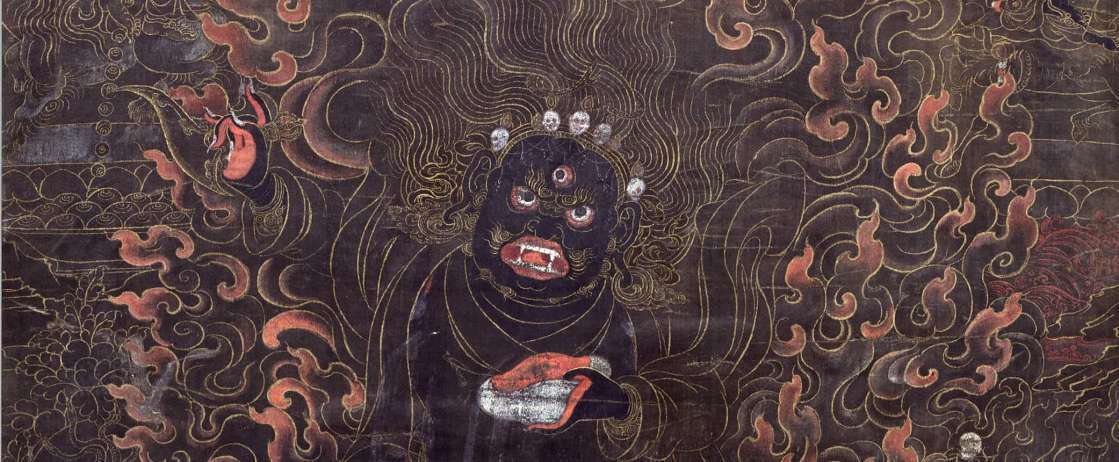
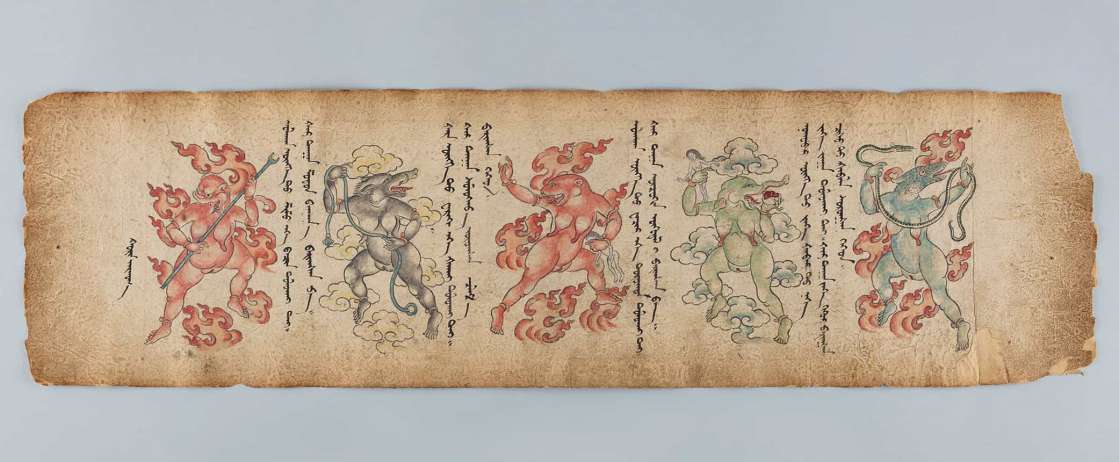

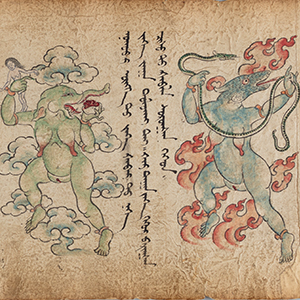
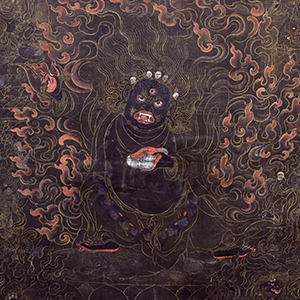
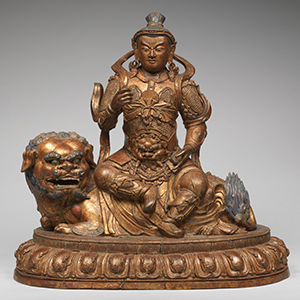
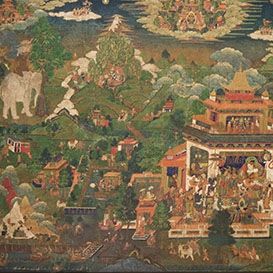
__small.jpg)
